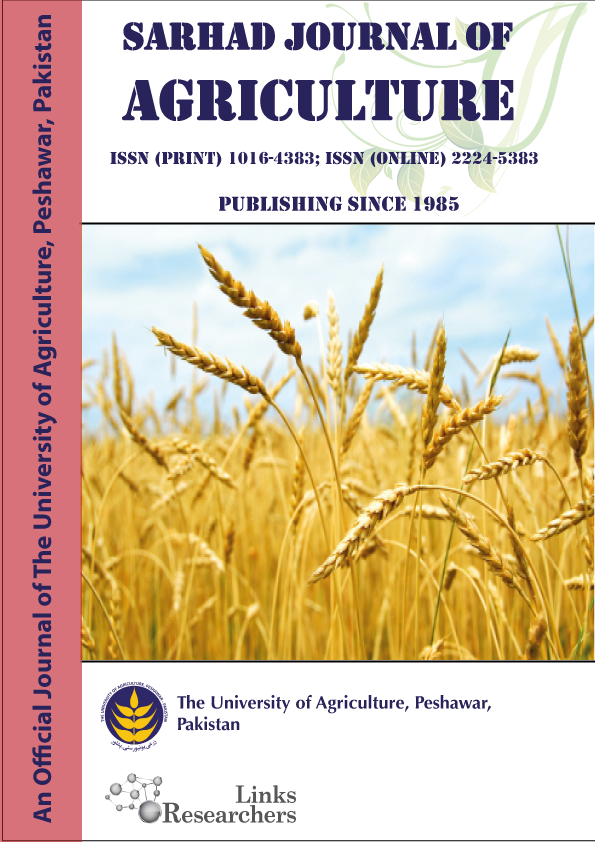SRTM DEM based 3-D Surface Deformation of Nanga Parbat Syntaxis through Drainage Density and Surface Roughness
SRTM DEM based 3-D Surface Deformation of Nanga Parbat Syntaxis through Drainage Density and Surface Roughness
Muhammad Shahzad1*, Syed Amer Mahmood2, Athar Ashraf3, Amer Masood2 and Saira Batool4
ABSTRACT
The Indo-Pak-Eurasia collision has caused recent fault activation and surface deformation in the Nanga Parbat Syntaxis (NPS) region. This investigation deals with the Shuttle Radar Topographic Mission Digital Elevation Model (SRTM DEM) based surface dynamic indices (drainage density-DD, topographic surface roughness-TSR) to constrain the neotectonics of Nanga Parbat Syntaxis (NPS) in Gilgit-Baltistan (Northern Pakistan). This study aims to assess the active surface deformation based on the DD and TSR techniques. These are the interrelated procedures, i.e. TSR investigation may be used to distinguish areas with low and higher DD values and their connection with the active tectonics. The three-dimensional maps for TSR and DD are generated using a moving window size of (1-4 km). TSR and DD maps show interesting results that correspond to the relative sensitivity of the landscape to regional neotectonics. DD exposed the neotectonic activity preserved in the Quaternary era in the surroundings of NPS. The TSR maps revealed that North-North-East (NNE), North-West (NW), South-West (SW) f the investigation region and segments parallel to the Sassi Raikot Fault (SRF), Sassi-Jaglot-Bunji (SJB) sector of Nanga Parbat Syntaxis as active tectonic zones. The areas which include, Shawar, Haramosh, Kachura, Astak Nala, Gilgit, Skardu, Astore, Sai Nala Jaglot, Gunar and Gorikot are highly vulnerable to active tectonic deformation. This research concludes that the TSR and DD techniques are potential markers for the demarcation of active vulnerable zones that may threaten the life lines in the socio economic context.
To share on other social networks, click on any share button. What are these?








